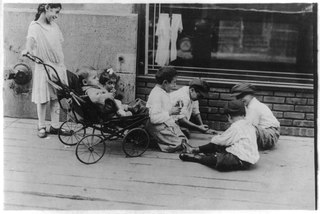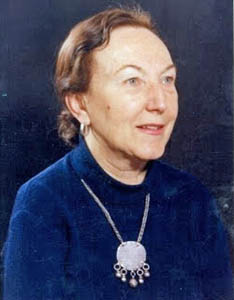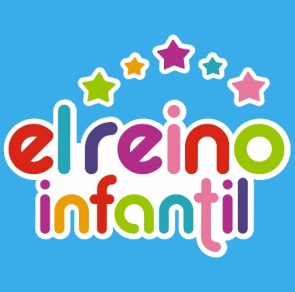Related Research Articles

A nursery rhyme is a traditional poem or song for children in Britain and many other countries, but usage of the term dates only from the late 18th/early 19th century. The term Mother Goose rhymes is interchangeable with nursery rhymes.
Gregorio Martínez Sierra was a Spanish writer, poet, dramatist, and theatre director, a key figure in the revival of the Spanish theatrical avant-garde in the early twentieth century.

Gustavo Adolfo Claudio Domínguez Bastida, better known as Gustavo Adolfo Bécquer, was a Spanish Romantic poet and writer, also a playwright, literary columnist, and talented in drawing. Today he is considered one of the most important figures in Spanish literature, and is considered by some as the most read writer after Miguel de Cervantes. He adopted the alias of Bécquer as his brother Valeriano Bécquer, a painter, had done earlier. He was associated with the romanticism and post-romanticism movements and wrote while realism was enjoying success in Spain. He was moderately well known during his life, but it was after his death that most of his works were published. His best known works are the Rhymes and the Legends, usually published together as Rimas y leyendas. These poems and tales are essential to the study of Spanish literature and common reading for high-school students in Spanish-speaking countries.

"Baa, Baa, Black Sheep" is an English nursery rhyme, the earliest printed version of which dates from around 1744. The words have not changed very much in two and a half centuries. It is sung to a variant of the 18th century French melody Ah! vous dirai-je, maman.
A children's song may be a nursery rhyme set to music, a song that children invent and share among themselves or a modern creation intended for entertainment, use in the home or education. Although children's songs have been recorded and studied in some cultures more than others, they appear to be universal in human society.
El Último de la Fila was a successful Spanish rock group based in Barcelona, Spain. Formed in 1985 by Manolo García and Quimi Portet, the group released a total of 7 full-length albums before disbanding in early 1998.

Childlore is the folklore or folk culture of children and young people. It includes, for example, rhymes and games played in the school playground. The best known researchers of the field were Iona and Peter Opie.
Evangelina Sobredo Galanes, known as Cecilia, was a Spanish singer-songwriter. She took her stage name from the song "Cecilia" by Simon and Garfunkel.

Clan is a Spanish free-to-air television channel owned and operated by Televisión Española (TVE), the television division of state-owned public broadcaster Radiotelevisión Española (RTVE). It is the corporation's television channel for kids, and is known for its programming for children between the ages of two and twelve.

Matilde Salvador Segarra was a Spanish composer and painter.

"Cántale a tu Bebé" is the name given to the second studio album by the Puerto Rican singer, songwriter and actress, Mary Ann Acevedo who performs with her husband, producer Guillermo Torres and features songs by the happy couple. Mary Ann is in the hopes of their first child so this project has all the feeling and love of an artist who is living the whole process of a woman waiting for her firstborn.

María Rodrigo was a Spanish pianist and composer. She was the daughter of Pantaléon Rodrigo, and studied music at the Madrid Conservatorium under José Tragó for piano, Valentín Arín for harmony and Emilio Serrano for composition. Maria was the first woman to have her opera performed in Spain. Her sister Mercedes Rodrigo was equally intelligent, being the first woman from Spain to obtain a degree in psychology from the Rousseau Institute in Geneva. The two left Spain for Switzerland during the Spanish Civil War, moved in 1939 to Bogota, Colombia, at the invitation of rector Agustín Nieto Caballero, and in 1950 to Puerto Rico at the invitation of José María García Madrid. With Pablo Casals, Rodrigo founded the Puerto Rico Conservatory of Music. She died in Puerto Rico in 1967. Maria was one of the few composers that addressed the composition of zarzuelas, a genre of Spanish music.
María de la Cruz Nájera Botello is a Mexican actress. She is the wife of Alejandro Bichir, and the mother of Odiseo, Demián and Bruno Bichir.

Francisco Ismael Segundo Parraguez Cabezas, or simply Ismael Parraguez was a Chilean musician, Normal teacher, poet, and novelist. He was known for being the creator of the Orfeón Chileno in 1914, during the centennial of the Battle of Rancagua and the children's poem Los pollitos dicen, which he published on his 1907 book Poesías Infantiles. Parraguez was also known by the pseudonym of Misael Guerra.

Alma Flor Ada is a Cuban-American author of children's books, poetry, and novels. A Professor Emerita at the University of San Francisco, she is recognized for her work promoting bilingual and multicultural education in the United States.

"Il Pulcino Pio" is an Italian song released as a single on 18 July 2012 on Globo Records by the Rome radio station Radio Globo. The song was interpreted by Morgana Giovannetti, an actress and host of the station.

"Ah! vous dirai-je, maman" is a popular children's song in France. Since its composition in the 18th century, the melody has been applied to numerous lyrics in multiple languages – the English-language song "Twinkle, Twinkle, Little Star" is one such example. It was adapted in Twelve Variations on "Ah vous dirai-je, Maman" by Wolfgang Amadeus Mozart.

Isabel Campoy is an author of children's books, poetry, and pedagogical resources. Central to Campoy's work is the promotion of bilingual education.

El Reino Infantil is an Argentine YouTube channel featuring music for children owned by Leader Music. It was founded by Roberto Pumar in 2011.
References
- ↑ Stein, Gari. "The Benefits of Using Music with Young Children". Songs for Teaching. Retrieved 16 November 2016.
- ↑ Marchant, Reinaldo E. "El autor de Los pollitos dicen" (in Spanish). Retrieved 26 January 2020.
- ↑ Jaramillo, Susie. "Little Chickes/Los Pollitos Dicen". Canticos. Encantos Media PBC. Retrieved 16 November 2016.